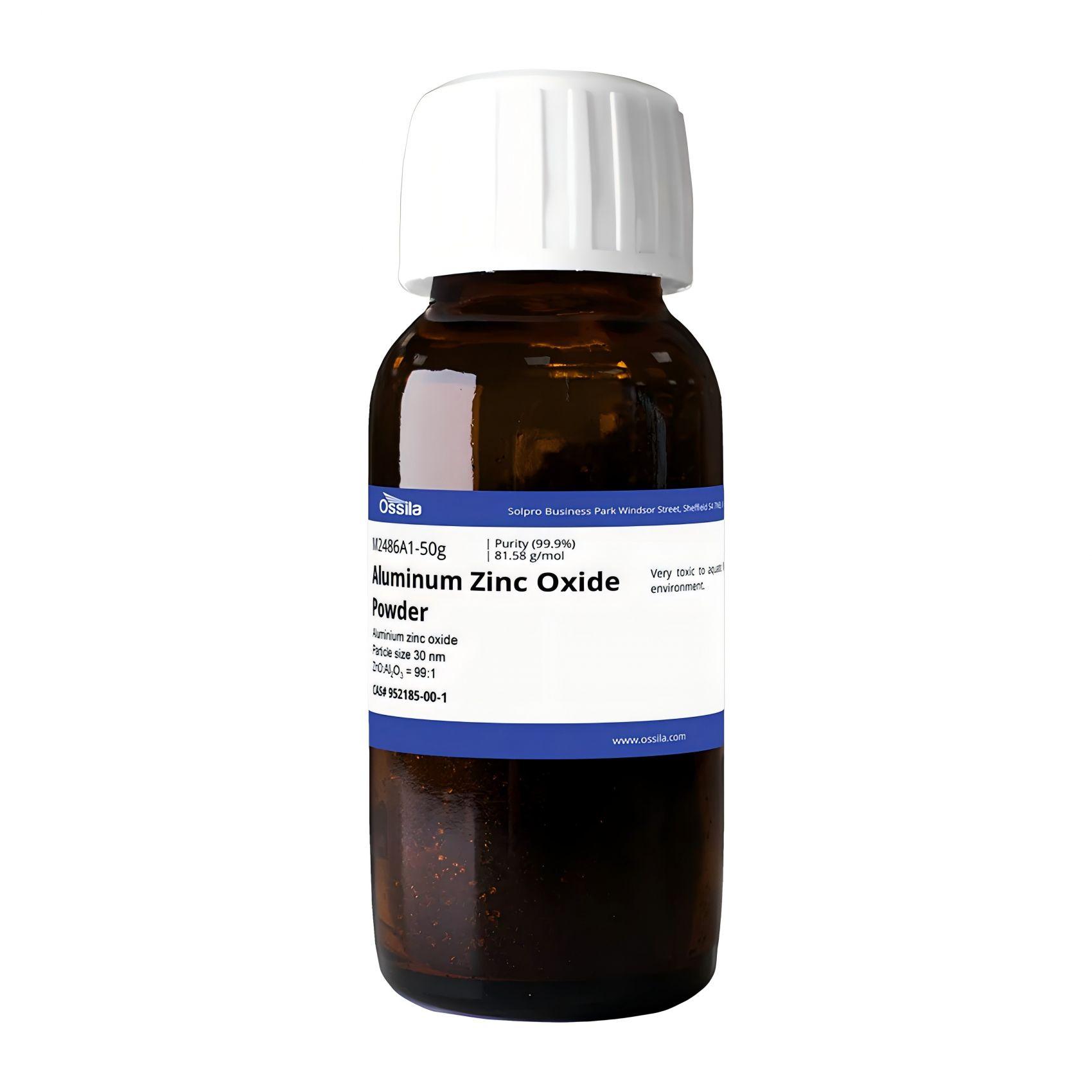
Aluminum zinc oxide (CAS number 952185-00-1), widely known by its abbreviation AZO, is a conducting metal oxide. Due to its high transparency in the visible light region, aluminum zinc oxide is often used as a transparent conducting layer for solar cells, OLEDs, and displays. Compared to indium tin oxide (ITO), AZO is relatively abundant, which accelerates the development of low-cost devices.
Aluminum zinc oxide has a work function of 4.92 – 5.13 eV, depending on the doping level of aluminum. A simple structured perovskite solar cells (Au/spiro-OMeTAD/Perovskite/AZO/glass) with AZO as an electron collecting layer achieves an open-circuit voltage (Voc) of 0.94 V, a short-circuit current (Jsc) of 20.2 mA/cm2, a fill factor (FF) of 0.67, and an overall power conversion efficiency (PCE) of 12.6%. Aluminum zinc oxide can efficiently minimize interfacial recombination, leading to high PCE (27.2% in a lead free perovskite solar cell [ITO/ZnO/AZO/Cs2BiAgI6/V2O5/Au]).
CAS Number 952185-00-1
Chemical Formula Al2O3:ZnO
Full Name Aluminum zinc oxide
Molecular Weight 81.58 g/mol (ZnO:Al2O3 = 99:1)
Melting Point N/A
Synonyms AZO, Aluminum doped zinc oxide, Aluminum doped zinc oxide, Aluminum zinc oxide
Classification or Family Transparent conducting oxides, Anti-static coating, Electrodes, Photovoltaics
Product Details
Purity 99.9%
Particle Size ca. 30 nm
Appearance Pale yellow powder